Abstract
OBJECTIVE--To determine whether there was excess ill health in people living near a coking works, and if so whether it was related to exposure to coking works' emissions. DESIGN--Populations varying in proximity to the coking works were compared with control populations. Health data were correlated with available environmental data. METHODS--Analysis of routinely collected mortality, cancer registration, and birth statistics; community survey using self completed postal questionnaires; retrospective analysis of general practice (GP) records; tests of respiratory function; and analysis of available environmental data. MAIN RESULTS--Study and control populations were comparable in terms of response rates, gender, and most socioeconomic indicators. For adults, age standardised mortality and cancer rates of the population closest to the coking works were comparable with those for the district as a whole. Gender ratios, birthweight, and stillbirth rates were comparable in the study and control populations. For several indicators of respiratory health including cough, sinus trouble, glue ear, and wheeze (but not for asthma and chronic bronchitis) there was a gradient of self reported ill health, with the highest prevalence in areas closest to the works. For example, sinus trouble was reported by 20% of adults and 13% of children in the area closest to the works compared with 13% and 6% respectively in the control area. GP consultations for respiratory disorders increased when pollution (measured by SO2 levels) was high: annual consultation rates per 1000 varied from 752 in the top group of daily pollution levels to 424 in the bottom group. Analysis of locally collected smoke and SO2 data indicated that SO2 concentrations were highest closest to the works and, after closure of the coking works, the number of days on which SO2 and smoke levels exceeded 100 micrograms/m3 and 90 micrograms/m3, respectively, fell steeply. CONCLUSION--Routinely available indicators failed to provide convincing evidence that the coking works had harmed health. Self report and GP consultations indicated that respiratory ill health in the people living close to the works was worse than expected. Some of the excess probably resulted from exposure to coking works emissions. The health effects of relatively low level but intermittently high air pollution from a point source may be subtle, contributing to respiratory morbidity, but not apparent in analysis of routine health indicators.
Full text
PDF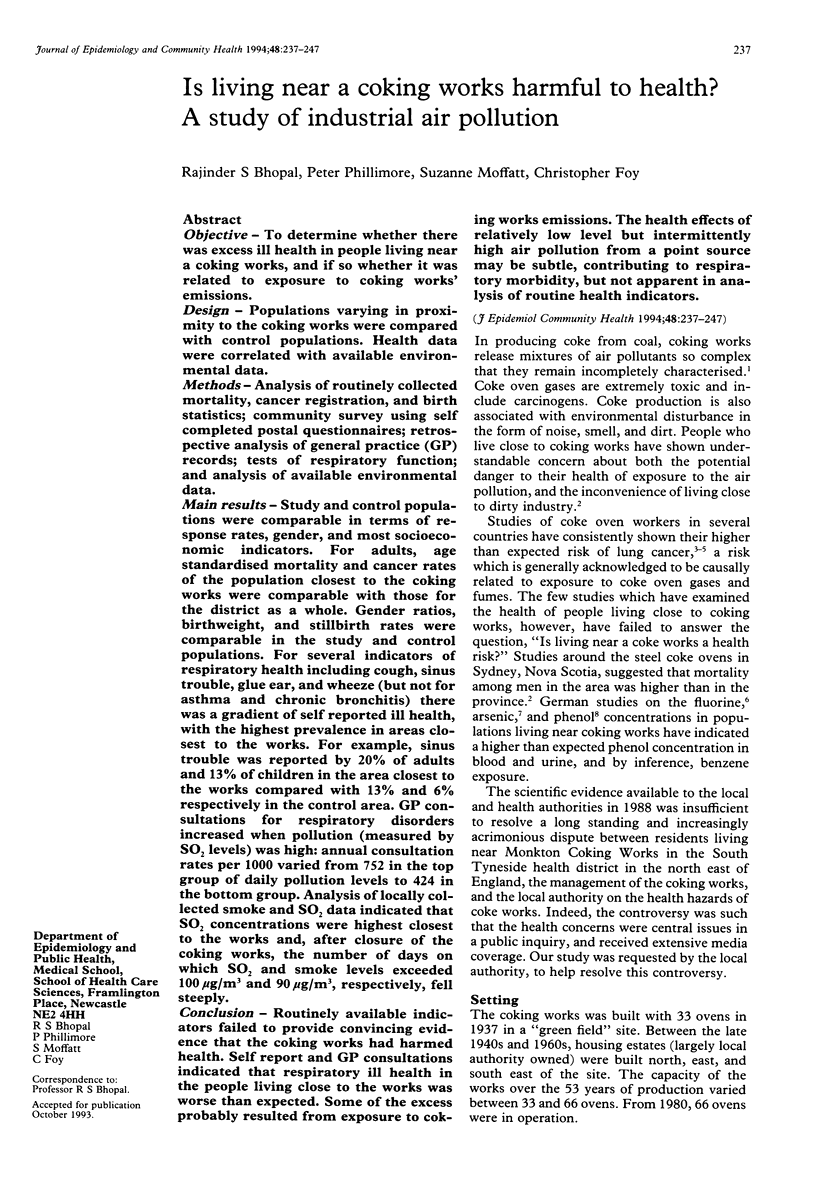
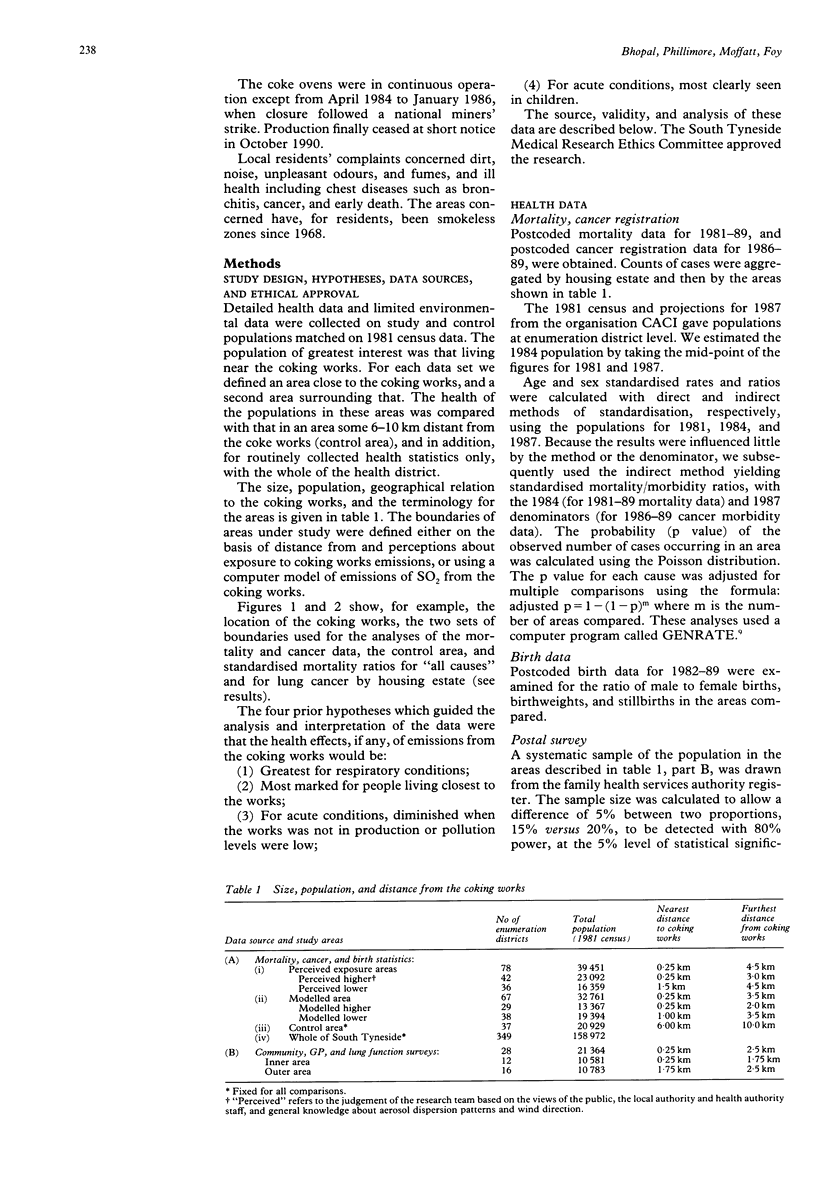
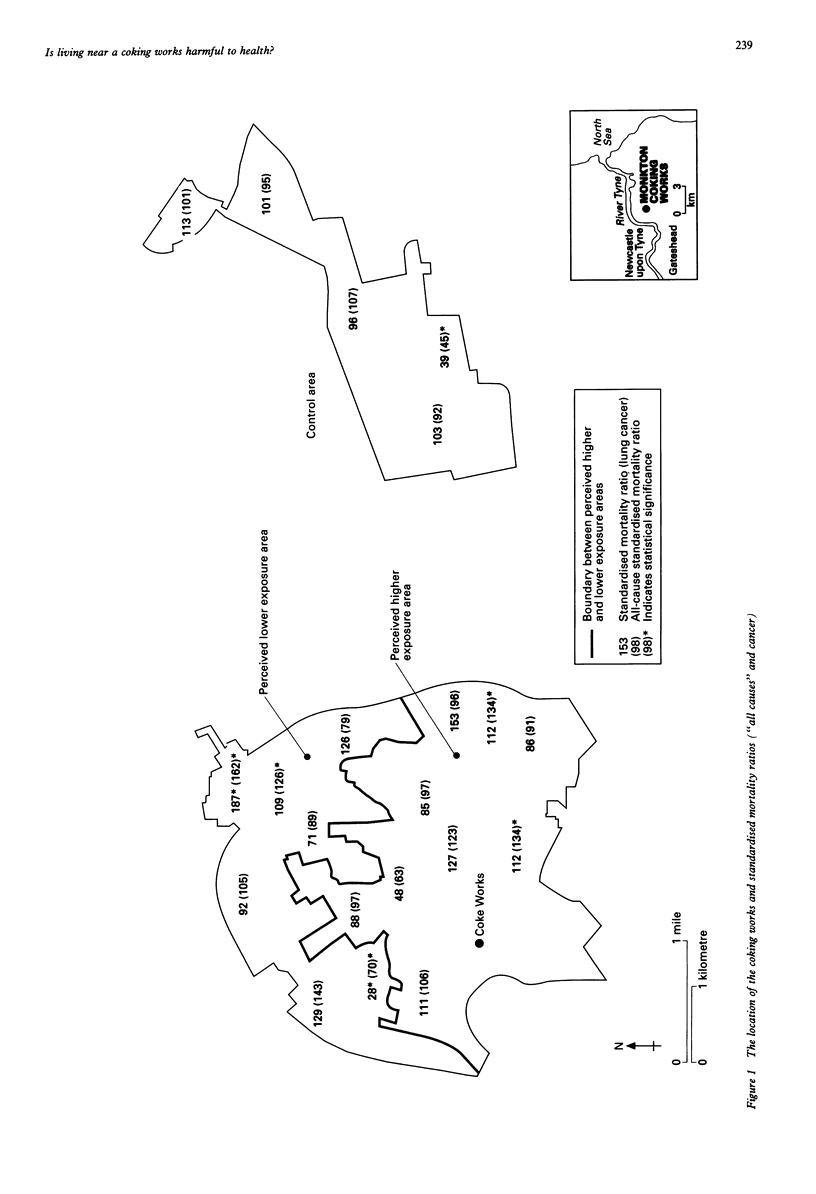
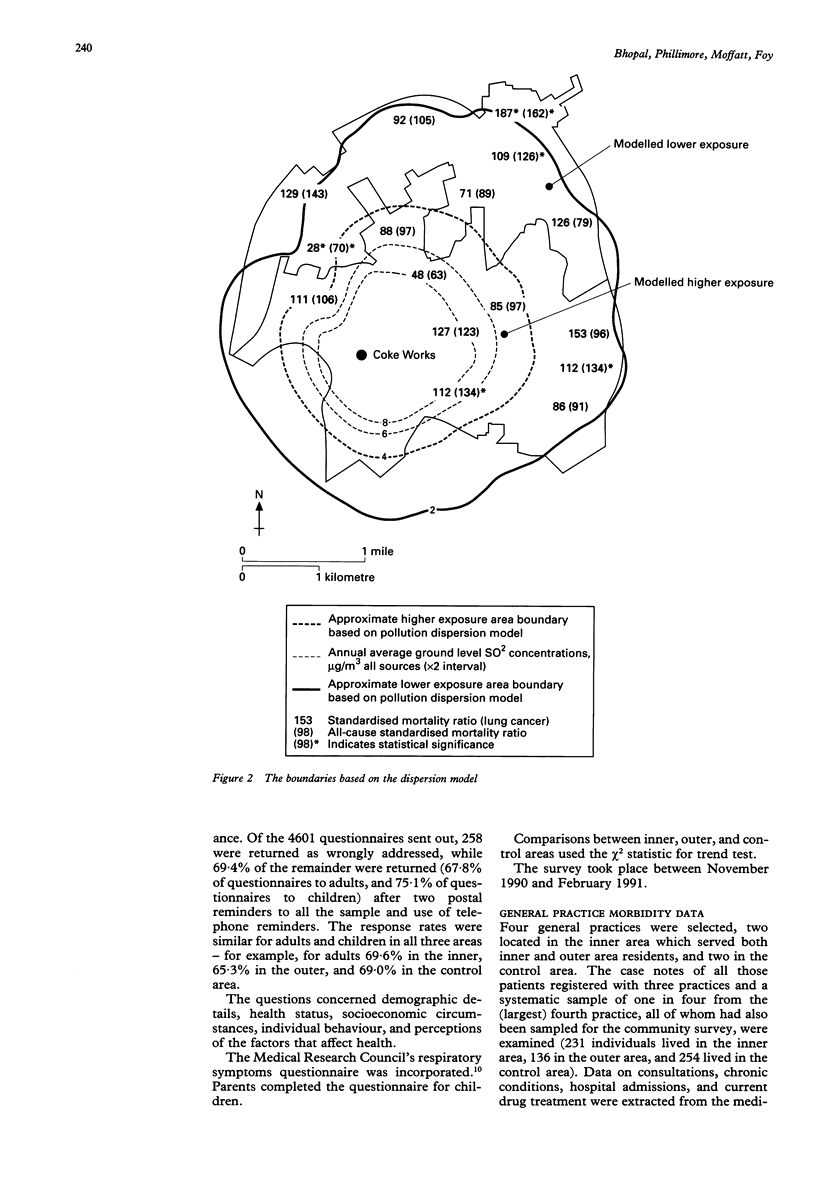
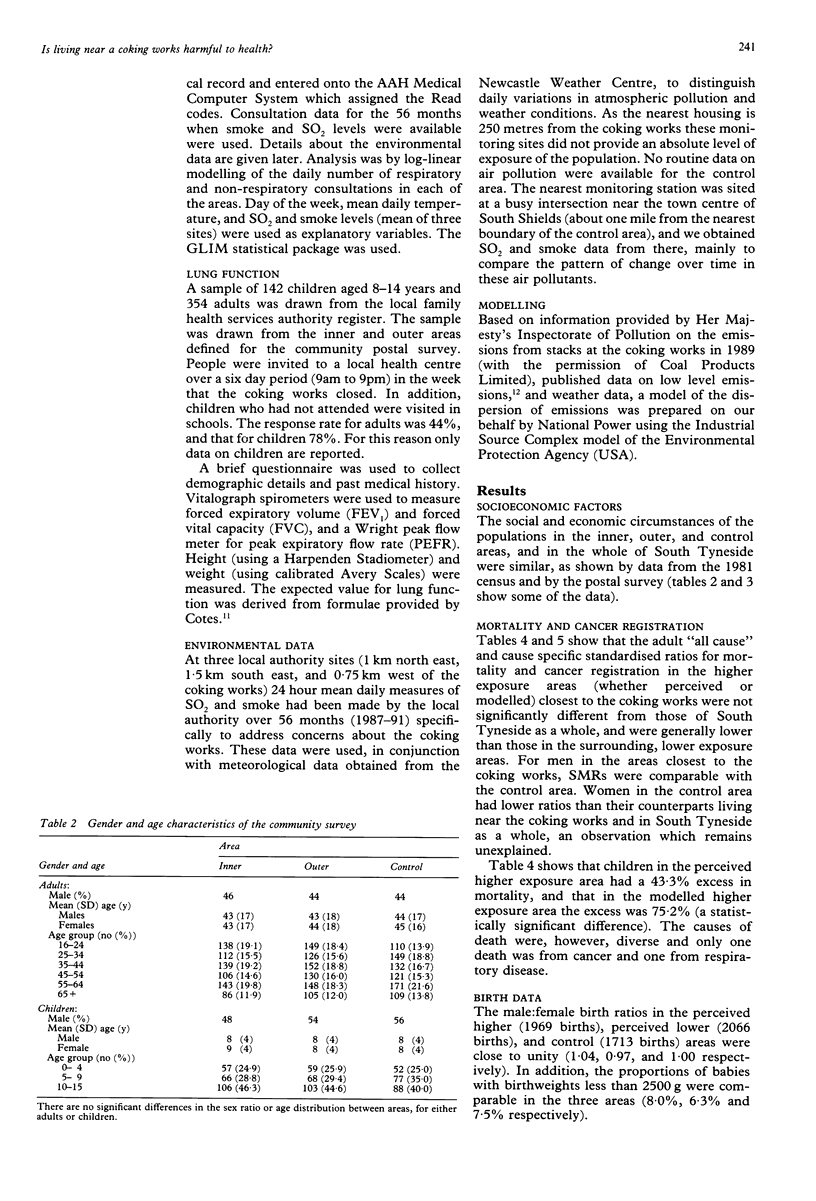
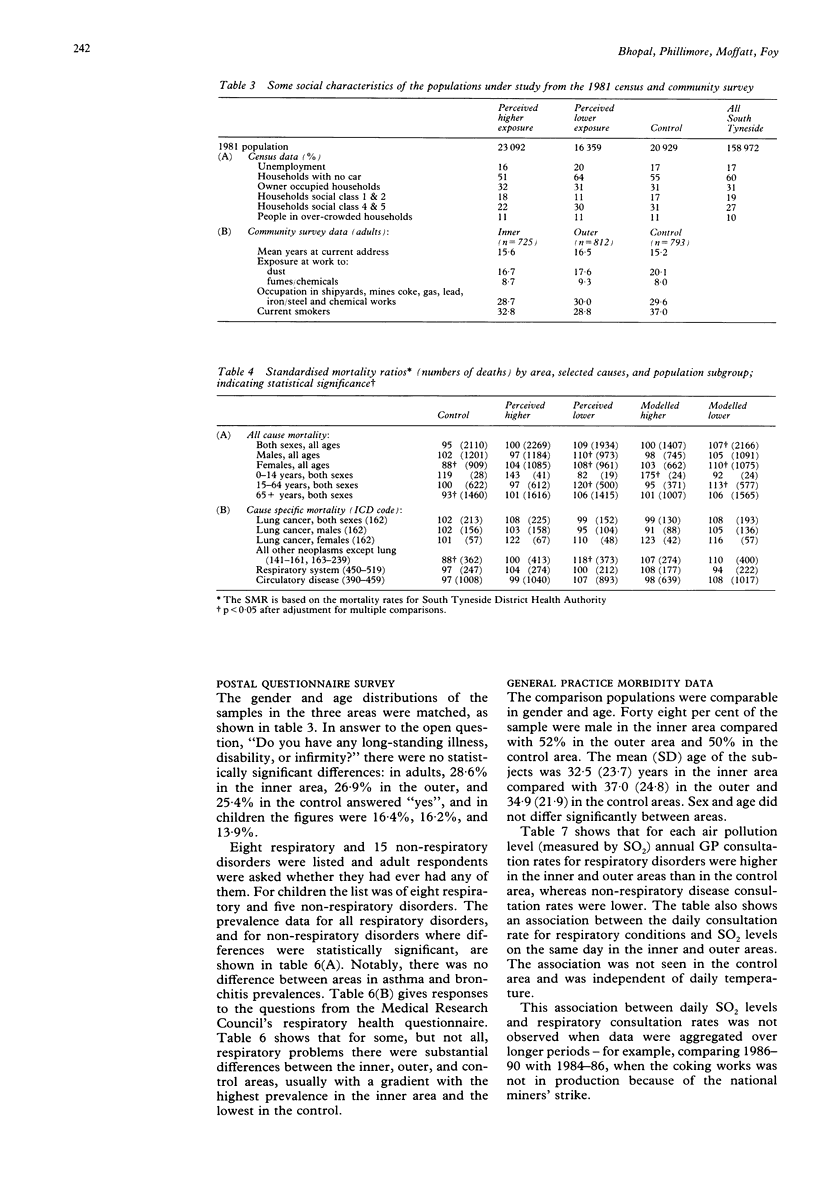

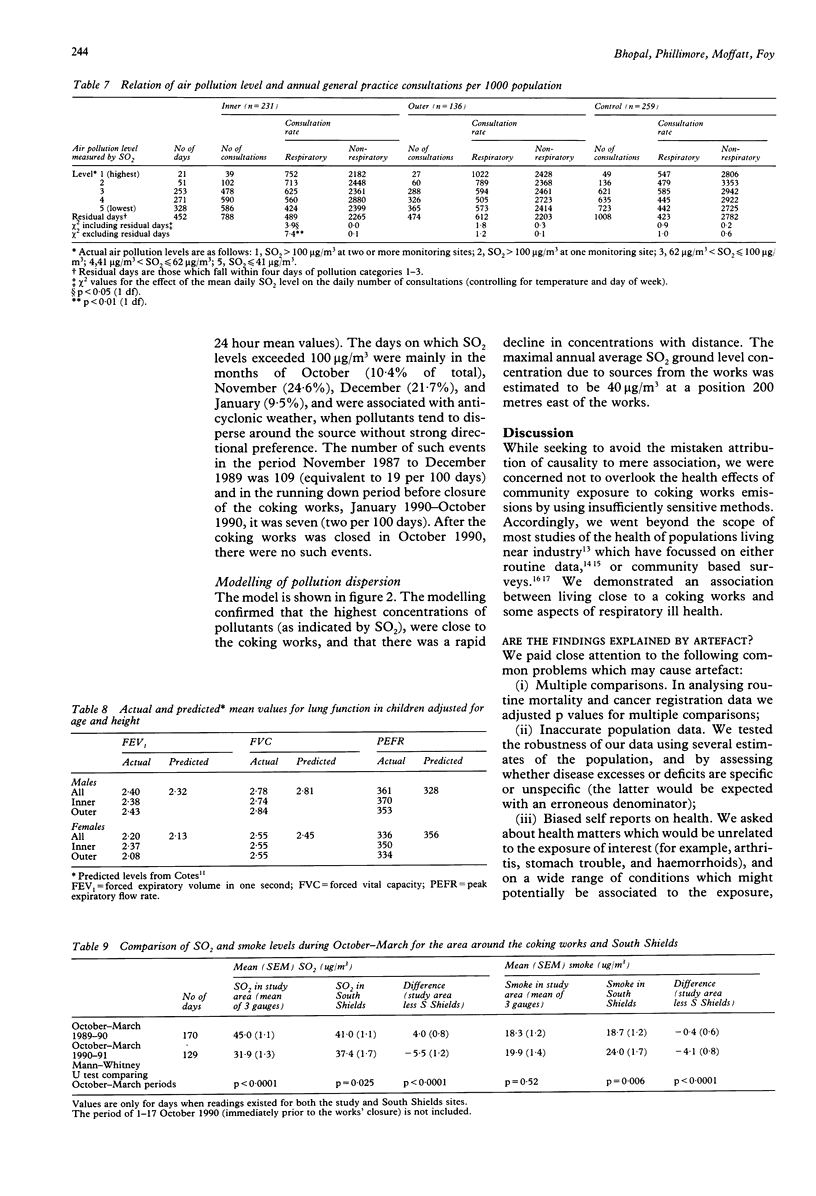
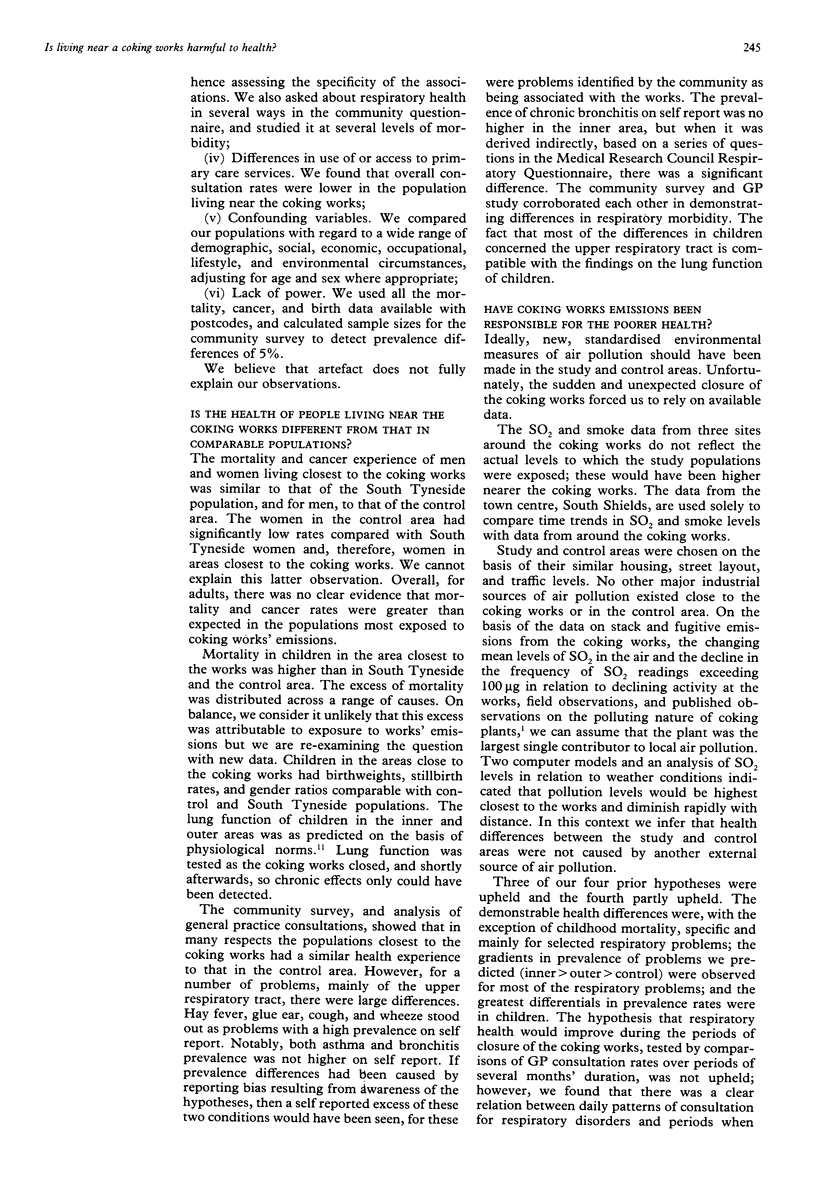
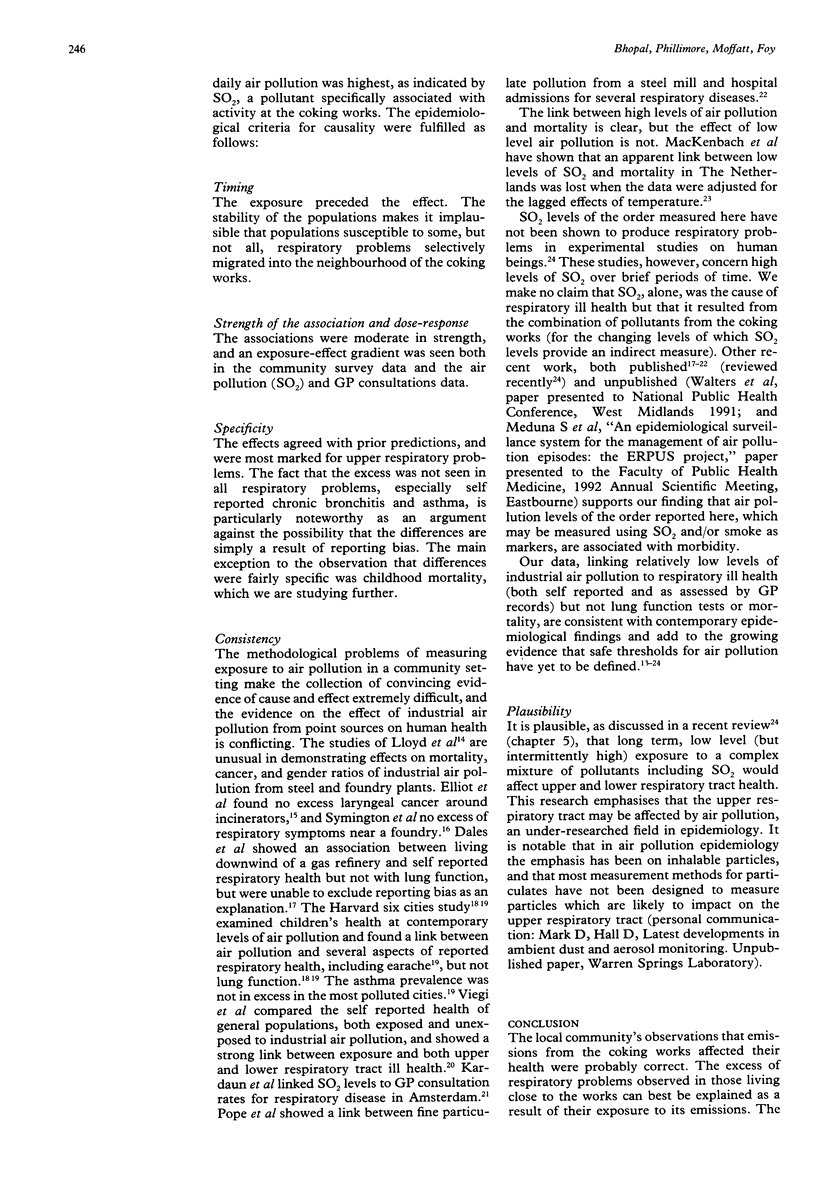
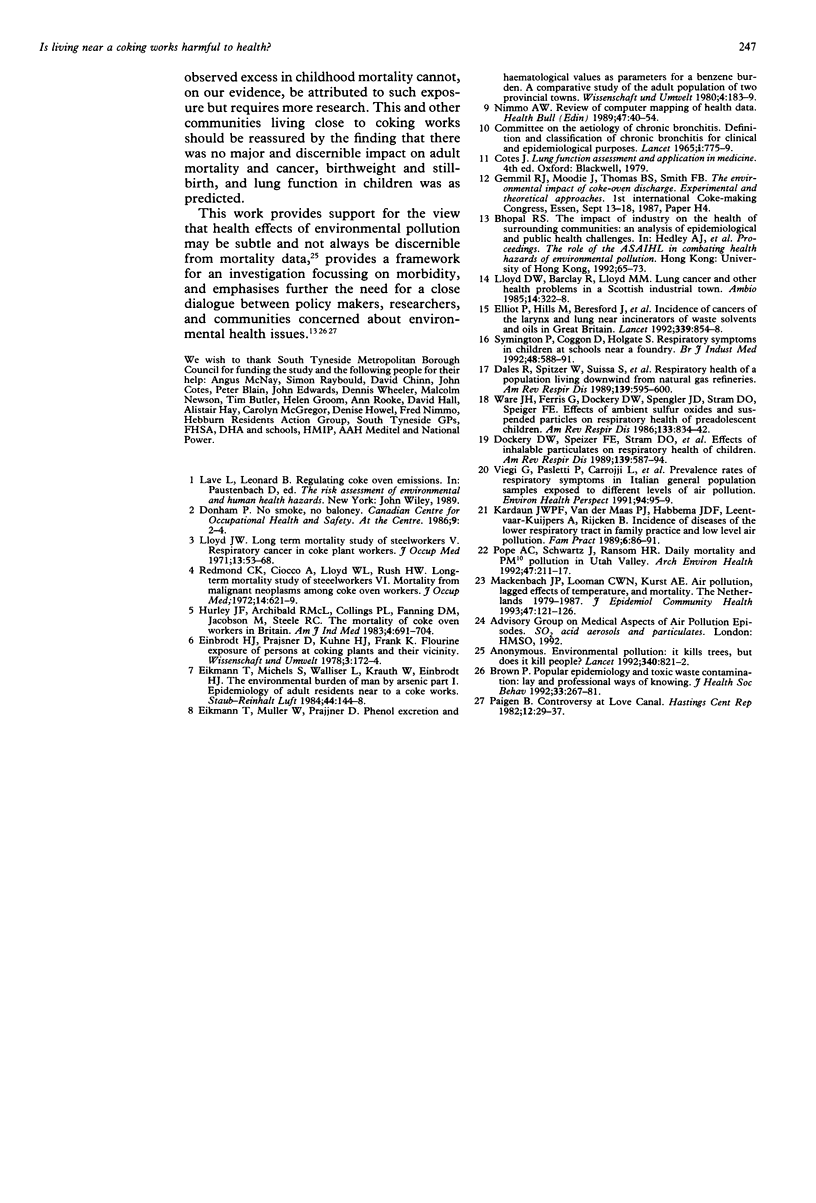
Selected References
These references are in PubMed. This may not be the complete list of references from this article.
- Brown P. Popular epidemiology and toxic waste contamination: lay and professional ways of knowing. J Health Soc Behav. 1992 Sep;33(3):267–281. [PubMed] [Google Scholar]
- Dales R. E., Spitzer W. O., Suissa S., Schechter M. T., Tousignant P., Steinmetz N. Respiratory health of a population living downwind from natural gas refineries. Am Rev Respir Dis. 1989 Mar;139(3):595–600. doi: 10.1164/ajrccm/139.3.595. [DOI] [PubMed] [Google Scholar]
- Dockery D. W., Speizer F. E., Stram D. O., Ware J. H., Spengler J. D., Ferris B. G., Jr Effects of inhalable particles on respiratory health of children. Am Rev Respir Dis. 1989 Mar;139(3):587–594. doi: 10.1164/ajrccm/139.3.587. [DOI] [PubMed] [Google Scholar]
- Elliott P., Hills M., Beresford J., Kleinschmidt I., Jolley D., Pattenden S., Rodrigues L., Westlake A., Rose G. Incidence of cancers of the larynx and lung near incinerators of waste solvents and oils in Great Britain. Lancet. 1992 Apr 4;339(8797):854–858. doi: 10.1016/0140-6736(92)90290-j. [DOI] [PubMed] [Google Scholar]
- Hurley J. F., Archibald R. M., Collings P. L., Fanning D. M., Jacobsen M., Steele R. C. The mortality of coke workers in Britain. Am J Ind Med. 1983;4(6):691–704. doi: 10.1002/ajim.4700040603. [DOI] [PubMed] [Google Scholar]
- Kardaun J. W., van der Maas P. J., Habbema J. D., Leentvaar-Kuijpers A., Rijcken B. Incidence of diseases of the lower respiratory tract in family practice and low level air pollution. Fam Pract. 1989 Jun;6(2):86–91. doi: 10.1093/fampra/6.2.86. [DOI] [PubMed] [Google Scholar]
- Lloyd J. W. Long-term mortality study of steelworkers. V. Respiratory cancer in coke plant workers. J Occup Med. 1971 Feb;13(2):53–68. [PubMed] [Google Scholar]
- Mackenbach J. P., Looman C. W., Kunst A. E. Air pollution, lagged effects of temperature, and mortality: The Netherlands 1979-87. J Epidemiol Community Health. 1993 Apr;47(2):121–126. doi: 10.1136/jech.47.2.121. [DOI] [PMC free article] [PubMed] [Google Scholar]
- Paigen B. Controversy at Love Canal. Hastings Cent Rep. 1982 Jun;12(3):29–37. [PubMed] [Google Scholar]
- Redmond C. K., Ciocco A., Lloyd J. W., Rush H. W. Long-term mortality study of steelworkers. VI. Mortality from malignant neoplasms among coke oven workers. J Occup Med. 1972 Aug;14(8):621–629. [PubMed] [Google Scholar]
- Symington P., Coggon D., Holgate S. Respiratory symptoms in children at schools near a foundry. Br J Ind Med. 1991 Sep;48(9):588–591. doi: 10.1136/oem.48.9.588. [DOI] [PMC free article] [PubMed] [Google Scholar]
- Viegi G., Paoletti P., Carrozzi L., Vellutini M., Diviggiano E., Di Pede C., Pistelli G., Giutini G., Lebowitz M. D. Prevalence rates of respiratory symptoms in Italian general population samples exposed to different levels of air pollution. Environ Health Perspect. 1991 Aug;94:95–99. doi: 10.1289/ehp.94-1567935. [DOI] [PMC free article] [PubMed] [Google Scholar]
- Ware J. H., Ferris B. G., Jr, Dockery D. W., Spengler J. D., Stram D. O., Speizer F. E. Effects of ambient sulfur oxides and suspended particles on respiratory health of preadolescent children. Am Rev Respir Dis. 1986 May;133(5):834–842. [PubMed] [Google Scholar]


